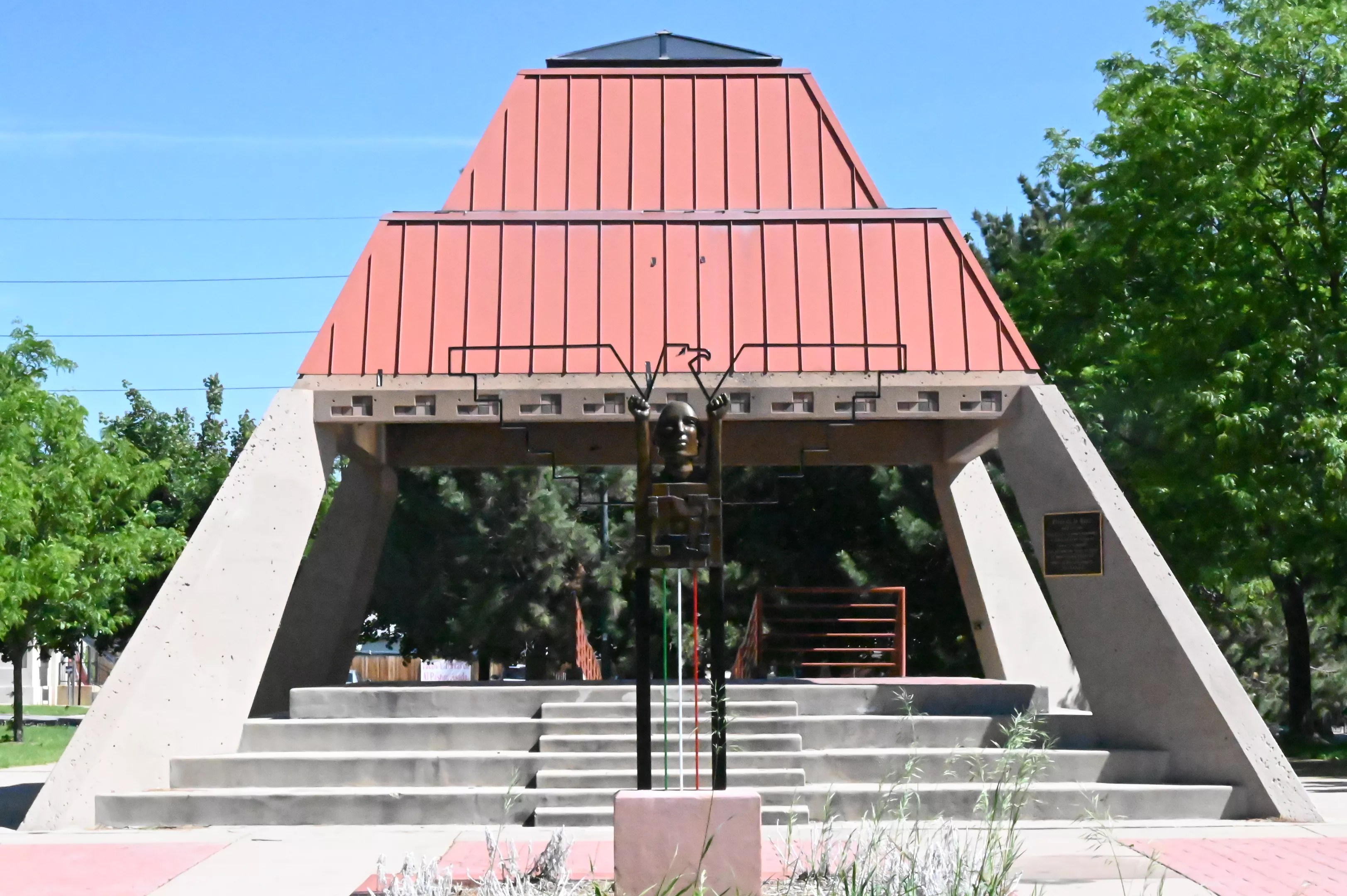
Bennito L. Kelty

Audio By Carbonatix
Chicanos started gathering at La Raza Park for speeches, graduations and quinceañeras sixty years ago, when the park in northwest Denver still had a pool and a different name.
Denver City Council chose to honor that history on June 26, when its members voted unanimously to make La Raza Park the city’s third historic cultural district, a rare designation given to geographic communities that have had a significant cultural impact on Denver. The only other two areas that carry that title are the Five Points Historic Cultural District (since 2002) and La Alma Lincoln Park Historic Cultural District (since 2019).
Since 1967, Denver City Council has designated 360 individual landmarks and 58 historic districts for preservation, but only 13 percent of those designations are “explicitly including historically excluded communities,” according to the city.
The historic cultural designation will allow La Raza to add recreational amenities while protecting the architecture and artwork in the park, which sits in the Sunnyside neighborhood at the corner of West 38th Avenue and Osage Street. Diane Medina, who has lived near the park for nearly fifty years, says the designation is also a “validation” that “this is a special place.”
“It’s not just about the preservation of those features – such as the kiosko, the murals and the sculpture. It’s also to highlight in mainstream media and to my colleagues on council and to the public the significance that the Chicano movement played in the makeup of Denver,” says Councilwoman Amanda Sandoval, whose district includes the park.
Sandoval introduced the proposal for La Raza’s designation in late May, after a study by the city titled “Nuestras Historias: Mexican American/Chicano/Latino Histories in Denver” concluded that public officials need to “diversify the Denver Landmark portfolio with more sites and districts for underrepresented groups.”
Sandoval says the park played “a significant role” in her upbringing, and that she attended quinceañeras, Día de los Muertos festivals and summer solstice celebrations there. In 2020, the councilwoman succeeded in having the park renamed La Raza Park. A similar effort had failed in 1988, when now councilmember-at-large Debbie Ortega represented the district.
La Raza Park was then known as Columbus Park; this part of town had been home to a large Italian community in the early twentieth century. But after the neighborhood became mostly Latino and the park became an important gathering place, the push to rename it offered a sense of “community control,” and the idea that residents had some say over the place where they lived.
La Raza means “the race” or “the people,” and the term was prominent during the Chicano movement of the 1960s and ’70s. The Mexican American Youth Organization, a Chicano group from Texas, created the La Raza Unida political party in 1970; the Southwest Council of La Raza, a civil rights advocacy group, formed in Arizona in 1968.
By then, the Denver park had become the site of both community celebrations and violent confrontations with police. The poor conditions of its pool sparked “splash-ins” by young Chicano activists in the summer of 1969, when Latino kids would visit public pools in affluent white neighborhoods in southeast Denver to demand equal access to city amenities.
One of the activists who worked as a lifeguard at La Raza Park was Nita Gonzales, the daughter of Crusade for Justice founder Rodolfo “Corky” Gonzales. With Gonzales in the lead, the Crusade for Justice organized the splash-ins just a few months after the group worked with students to push the West High School Blowouts in what would become La Alma Lincoln Park.
Corky Gonzales used the park for graduations for Escuela Tlatelolco, the dual-language alternative school he founded. In 1972, the Crusade for Justice opened Servicios de La Raza a few blocks from the park, offering the Chicano community affordable, bilingual social services. But the park itself could be a battleground.
On June 28, 1981, when hundreds of men, women and children came to the park to celebrate the start of summer, police told them to disperse, then released tear gas and attack dogs, according to the landmark designation application.
“The role La Raza played as a ‘liberated’ area – under community control – is a source of pride for the community today, as it was in the 1970s,” the application notes.
While La Raza Park is only Denver’s third historic cultural district, there could soon be a fourth. Gay community members are pushing to create the city’s first Queer Cultural District in an area they’ve dubbed Lavender Hill, which includes parts of Capitol Hill, City Park West, Cheesman Park, Baker and Five Points.